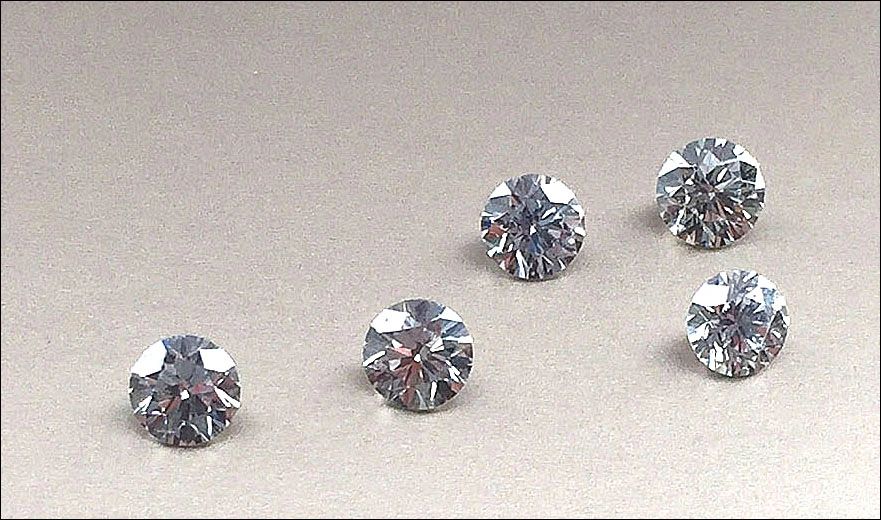Diamond Cuts: Understanding the Key to Brilliance and Beauty

Table of Contents
The Importance of Diamond Cut
The cut of a diamond refers to how well it has been shaped and faceted. It directly affects the diamond’s ability to reflect and refract light, which in turn influences its brilliance and sparkle. A well-cut diamond will exhibit exceptional brilliance, making it appear more lively and radiant. Conversely, a poorly cut diamond can appear dull and lackluster, regardless of its other qualities. Understanding the importance of the diamond cut is essential for selecting a piece of jewelry that truly stands out.
Popular Diamond Cuts
Several popular diamond cuts each offer distinct characteristics and appeal. Here are some of the most common:
- Round Brilliant Cut: The round brilliant cut is the most popular and classic diamond shape, known for its exceptional brilliance and sparkle. With 58 facets, it is designed to maximize light reflection and enhance the diamond’s fire. This cut is ideal for those seeking a timeless and elegant look.
- Princess Cut: The princess cut is a modern and stylish shape that combines square or rectangular facets with a brilliant cut’s sparkle. Known for its clean lines and contemporary appeal, the princess cut is a popular choice for engagement rings and other fine jewelry.
- Emerald Cut: The emerald cut features a rectangular shape with step-cut facets that create a sophisticated, elongated appearance. Its unique “hall of mirrors” effect emphasizes the diamond’s clarity and color. The emerald cut is perfect for those who appreciate classic and understated elegance.
- Cushion Cut: The cushion cut, also known as the pillow cut, has a soft, rounded shape with large facets that enhance its brilliance. This vintage-inspired cut combines a classic appearance with a modern twist, making it a favorite for both engagement rings and antique-style jewelry.
- Asscher Cut: The asscher cut is similar to the emerald cut but with a square shape and deeper cut. It features a distinctive “X” pattern and is known for its vintage charm and glamorous appeal. The asscher cut is ideal for those seeking a unique and eye-catching diamond.
- Oval Cut: The oval cut offers a rounded shape with an elongated appearance that can make the diamond appear larger than its carat weight. Its brilliance and fire are comparable to the round brilliant cut, and it is a popular choice for those looking for a distinctive yet classic option.
Factors Affecting Diamond Cut Quality
Several factors influence the quality of a diamond cut, including:
- Proportions: The proportions of a diamond, such as its depth, table size, and crown angle, play a crucial role in its overall cut quality. Well-balanced proportions ensure optimal light performance and enhance the diamond’s brilliance.
- Symmetry: Symmetry refers to how well the diamond’s facets are aligned and how evenly they are cut. High-quality symmetry enhances the diamond’s sparkle and ensures a consistent appearance.
- Polish: The polish of a diamond refers to the smoothness of its surface and the quality of its finish. A well-polished diamond will have fewer surface blemishes and will reflect light more effectively.
Choosing the Right Diamond Cut
When selecting a man made diamonds, consider the following factors:
- Personal Style: Choose a cut that reflects your personal style and preferences. Whether you prefer the classic brilliance of a round cut or the vintage charm of a cushion cut, select a shape that complements your taste and the overall design of the jewelry.
- Budget: Different cuts can affect the price of a diamond. For example, round brilliant cuts are often more expensive due to their popularity and the amount of rough diamond lost during cutting. Consider your budget and choose a cut that offers the best value for your investment.
- Purpose: The purpose of the diamond will also influence your choice of cut. For engagement rings, popular cuts like the round brilliant or princess cut are often favored, while for other types of jewelry, you might opt for a more unique or personalized shape.
Conclusion
The cut of a diamond is a crucial factor that affects its brilliance, beauty, and overall appeal. Understanding the different types of diamond cuts, their characteristics, and how they impact the diamond’s performance can help you make an informed choice when selecting the perfect stone. Whether you prefer the classic sparkle of a round brilliant cut or the vintage elegance of a cushion cut, the right diamond cut can enhance your jewelry and make it a cherished piece for years to come.







